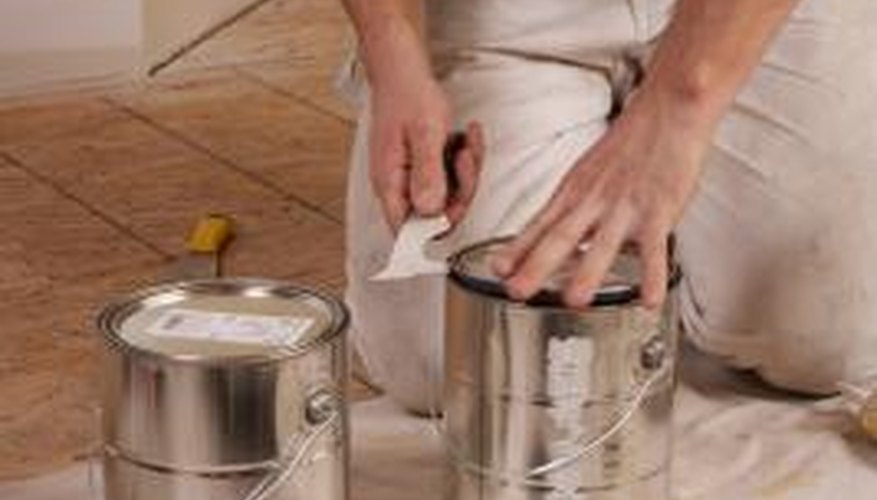A good water-resistant latex acrylic or alkyd primer-sealer effectively seals water-based latex paints and can add years to the life of any paint job and helps preserve whatever you paint against water damage. A good primer not only seals the surface to be painted, but also prepares it for the application of the paint, improving adhesion and helping prevent bleed through of old colours or dark spots on the original surface.
- A good water-resistant latex acrylic or alkyd primer-sealer effectively seals water-based latex paints and can add years to the life of any paint job and helps preserve whatever you paint against water damage.
Choose an acrylic water-based latex or alkyd alcohol-based primer-sealer and latex paint suitable for the surface you are painting. Various manufacturers create special blends that differ for drywall or plaster than for hardwood or veneer surfaces. Talk to your paint store representative about what type works best for your application. Choose matt, semigloss, gloss or high gloss depending on where you want to use it, whether it needs to be scrubbable, easy to repair, longer lasting or resistant to chemicals, oils or weather.
Tape edges and fixtures you don't want painted with masking tape and trim with the box cutters to get a clean edge.
Clean and prepare the surface as suggested on the directions for your primer-sealer product. If you are prepping bare wood, you will need to treat any knots in the wood surface with an alkyd sealer. You can then do the rest of the surface in either an alkyd or acrylic sealer as you wish. Alkyd primer-sealer is more effective at sealing porous surfaces like knots or end grain wood surfaces, especially if you are applying the paint layer to a heavily touched, bumped or used surface.
- Clean and prepare the surface as suggested on the directions for your primer-sealer product.
- Alkyd primer-sealer is more effective at sealing porous surfaces like knots or end grain wood surfaces, especially if you are applying the paint layer to a heavily touched, bumped or used surface.
Spray or brush two to three thin coats of primer to the surface to be painted. Allow the primer-sealer to dry to the touch between coats. Some one-coat sealers are designed to be applied in one pass. Follow directions and be sure you don't miss a spot since you only have one shot at covering the entire surface.
Spray or brush at least two coats of latex/acrylic water-based paint over the primed surface. If the surface is furniture, cabinetry or some other fine surface, sand the paint lightly with fine steel wool between coats, but not the final coat.
Check the painted area for missed spots after it has had time to cure. Score the paint along the edges of the masked areas before removing the tape to prevent the tape from pulling the paint away from the freshly painted surface.
TIP
If you are having trouble with mildew in the area to be painted, use a mildew-killing primer. Mildewcides in the primer will not only kill mildew, but also help prevent its formation on walls for years.
WARNING
Use a paint mask and eye protection, especially if spraying or rolling paint to prevent eye injury.
